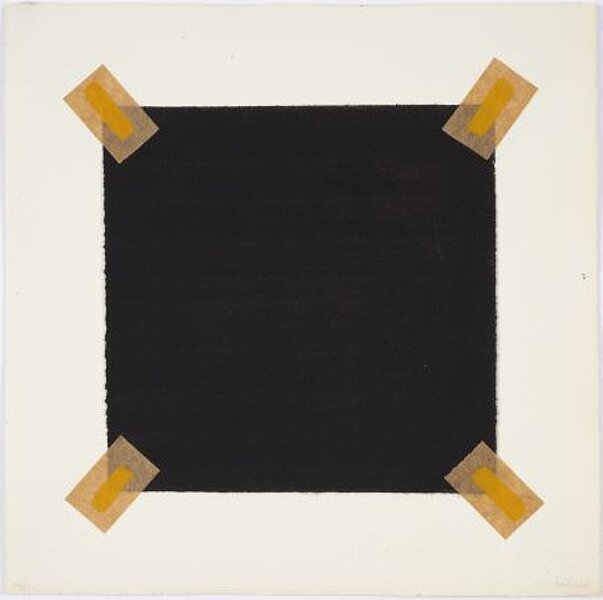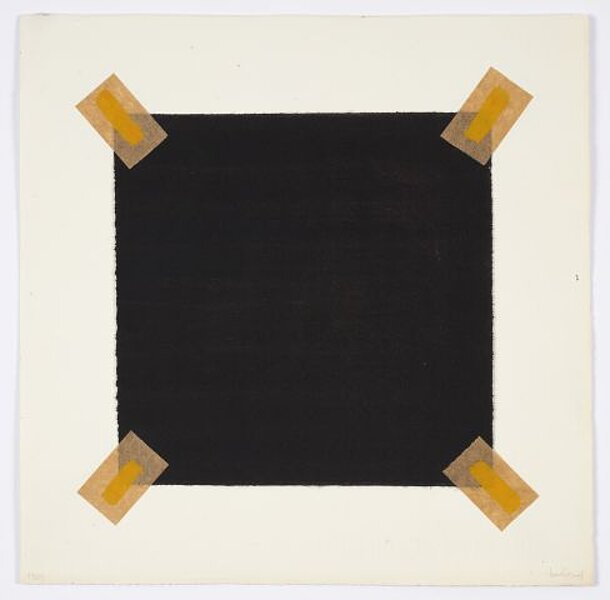
Tornquist, Jorrit
Hommage a Malevic
Homage to Malevich
1959
| Object description | Tempera on paper, painted sheet, adhesive tape on handmade paper |
|---|---|
| Object category | graphics |
| Material |
Support:
adhesive tape,
paper
|
| Technique |
Object:
paintings
|
| Dimensions |
Object:
height: 27,6 cm,
width: 27,6 cm
|
| Year of acquisition | 2012 |
| Inventory number | MG 507/0 |
| Creditline | Sammlung Dieter und Gertraud Bogner im mumok |
| Rights reference | Tornquist, Jorrit |
| Further information about the person | Tornquist, Jorrit [GND] |
| Literature | Leidenschaftlich Exakt.Sammlung Dieter und Gertraud Bogner im mumok |
A square piece of paper painted black and mounted onto a square white sheet using four pieces of tape. Not very spectacular. But this collage by Jorrit Tornquist embodies all the debate in the history of art on the meaning and essence of abstraction. As the title of this work, “Homage à Malevich,” says, it refers to a work by Kasimir Malevich—the 1915 painting “Black Square on White Background.” This is a true icon of art history, quoted and explored by artists, and more like a manifesto than a painting. Malevich wrote: “When, in the year 1913, in my desperate attempt to free art from the ballast of objectivity, I took refuge in the square form and exhibited a picture which consisted of nothing more than a black square on a white field [. . .]. It was no ‘empty square’ I had exhibited but the feeling of non-objectivity.” Tornquist‘s square of 1959 seems to be hiding something from our gaze. Is there something else to see behind the piece of paper? This question as to what is “underneath” or “behind” is not answered. Whether the essence is in the perception of form or in the perception of content becomes a philosophical conundrum without beginning or end, a perpetuum mobile of cultural theory. Tornquist said: “Pasting over – pasting up; but nonetheless: without light no darkness, without darkness no light, ad infinitum.”
© mumok – museum moderner kunst stiftung ludwig wien

